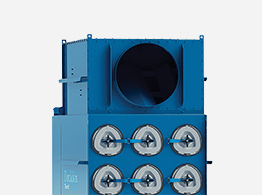Food and agricultural processors have led the manufacturing industry in combustible dust risk mitigation. Now that the National Fire Protection Association (NFPA) has published standards on the risks of combustible dust, it’s a good time to review, and possibly revise your mitigation strategies.
Regulatory Background
Although NFPA standards are not part of federal law, they are considered industry best practices. Many municipalities adopt them in their code and OSHA inspectors sometimes reference them under the General Duty clause when citing unsafe work conditions.
In food and agricultural processing, the most relevant standard is NFPA 61, Standard for the Prevention of Fires and Dust Explosions in Agricultural and Food Processing Facilities. The latest edition of NFPA 61 requires that any existing food or agricultural processing facility with combustible or explosible dust must complete a dust hazard analysis (DHA) by January 01, 2022. To guide you through developing your DHA, the standard also includes a chapter on hazard identification and an example DHA process checklist.
Once you have identified your combustible dust and process risks, you should evaluate your strategies and equipment to determine how to best mitigate those risks. Here are six strategy and equipment options to help you prevent combustion events and protect your facility in the earliest stages of a fire or explosion.
Prevention Strategies and Equipment
Facility Housekeeping — Good housekeeping is fundamental to reduce the risk for combustible dust related catastrophic fires and explosions. An initial deflagration can disturb dust accumulated on walls, ceilings, pipes, and girders, which then becomes fuel for a second, potentially larger explosion. Regular inspection and dust cleaning from floor to ceiling will help you minimize this hazard.
Dust Collection — A dust collection system filters the air, helping to prevent dust accumulation. These systems create airflow to capture dust at designated points and move it to a dust collector.
Thanks to new advancements, dust collector systems come in many sizes and can be located indoors or outdoors. An outdoor location gives you additional mitigation strategies. For example, a fire in an outdoor collector, properly isolated, could be allowed to burn itself out. However, food manufacturers have three good reasons to consider indoor point-of-use dust collectors:
Limited cross-contamination — Collecting fugitive dust where it is generated helps prevent cross-contamination between food or agricultural product lines. It also keeps dusts from mixing that could otherwise be volatile and increase combustion risks.
Cleaner facility — Removing dust close to its point of generation helps minimize dust accumulation and avoids long ductwork otherwise required. Less duct reduces the likelihood that a deflagration could spread through the facility. It may also bring down initial system cost and be easier to maintain.
Reduced downtime — A single point of use dust collector can be turned off if needed, without effecting the entire production line. This reduces downtime and potentially saves energy costs, as well.
Protective Strategies and Equipment
In addition to prevention efforts, you need protection strategies and equipment in place to limit damage if a combustion event does occur. In food processing, protection methods focus on isolation, venting, and suppression.
Isolation Devices — Isolation devices sense increased pressure in the earliest stages of a combustion event and prevent the deflagration from propagating through the duct.
Passive devices — Flow-actuated isolation valves are activated by a pressure wave to contain an explosion within a designated area of the dust collection system.
Active devices — Available for both fire and explosions, active devices (inlet and outlet) use sensors and signals to initiate pre-determined responses. An explosion isolation valve keeps flames from spreading in the duct. A fire abort damper diverts smoke and flames when the detection system senses a fire.
Explosion Venting — Explosible dust is commonly mitigated through explosion vents, which intentionally open at a defined pressure point to release the gases to a designated safe location. This kind of venting is an inexpensive and effective control measure, but it must be vented to the outside.
Flameless explosion vents — This subcategory of explosion vents incorporate stainless steel metal mesh to contain the flame front while releasing pressure. Unlike traditional explosion vents, flameless vents do not have to be vented through an outside wall or roof. However, they differ in performance from traditional explosion vents. Check with your vendor about the best options for your facility.
Explosion Suppression Systems — An explosion suppression system uses sensors to detect pressure changes and then inject a chemical flame suppressant (often sodium bicarbonate) into the collector within milliseconds of a deflagration. A suppression system can reduce the risk of secondary fires or explosions and may reduce clean-up time. These systems are also a good option indoors or whenever the dust must remain in the collector. Suppression systems can also be installed at inlet and outlet ducts as an isolation strategy.
Optimizing Your Operations
The process of developing a dust hazard analysis provides a lot of food for thought. The checklist in NFPA 61 will guide you through addressing your current combustible dust risks. (See Annex F in NFPA 61: Checklist for Dust Hazard Analysis — Example for an Existing Facility.)
Any major change or new process also requires a DHA, so it’s worthwhile to identify any remodeling or expansion you anticipate in the near future. Some common reasons for updating processes or equipment include compliance with the Food Safety Modernization Act (FSMA), advancements in technologies, or increased production rates. Integrating your risk mitigation planning with your operational upgrades may save you money and help you keep your DHA process on track.
Finally, when weighing your mitigation options, don’t forget to look at the total cost of a combustion event. Although advanced technologies have higher initial price tags, options that reduce downtime, clean-up, and damage may not seem as expensive in the bigger picture.




